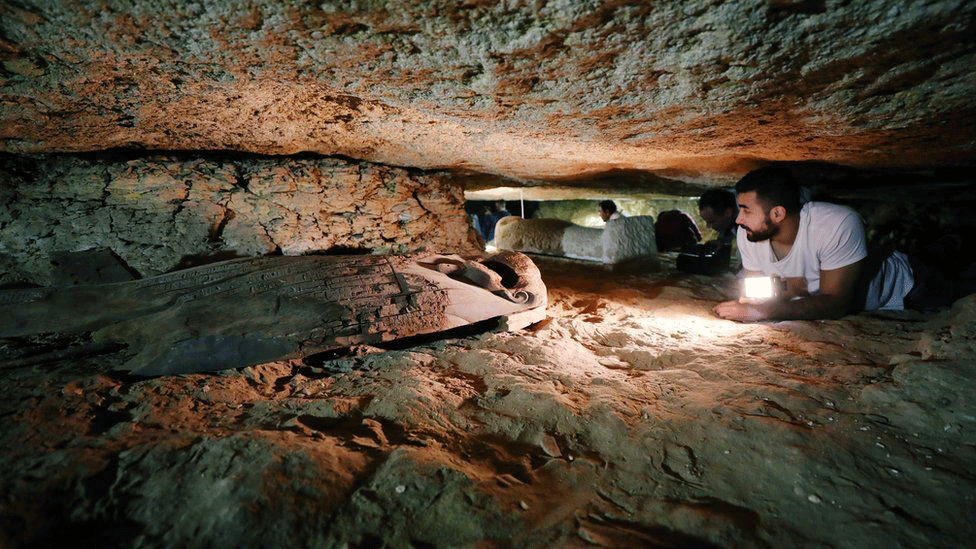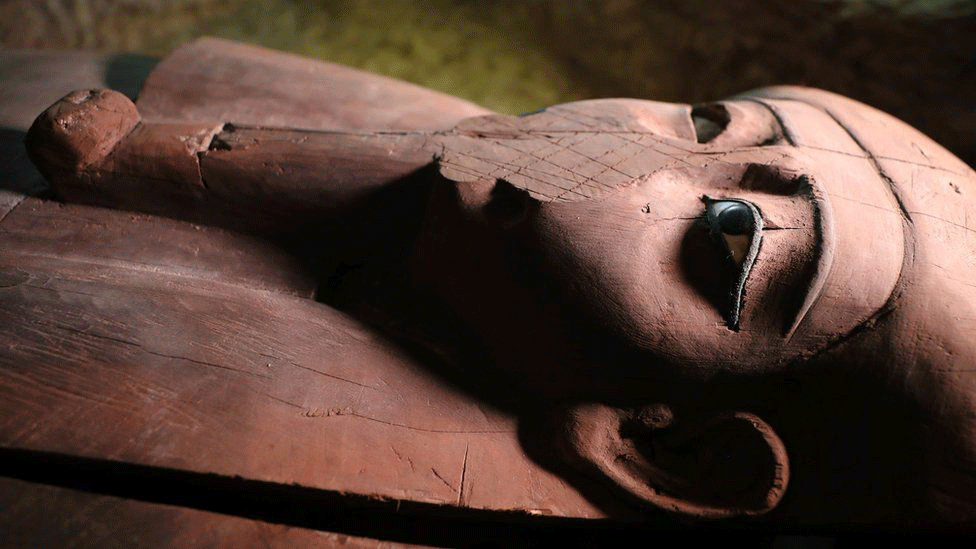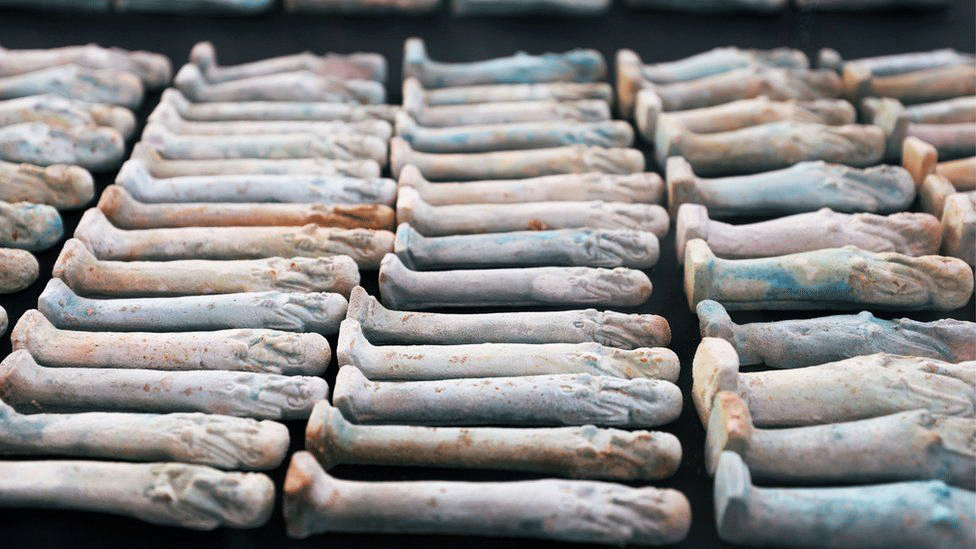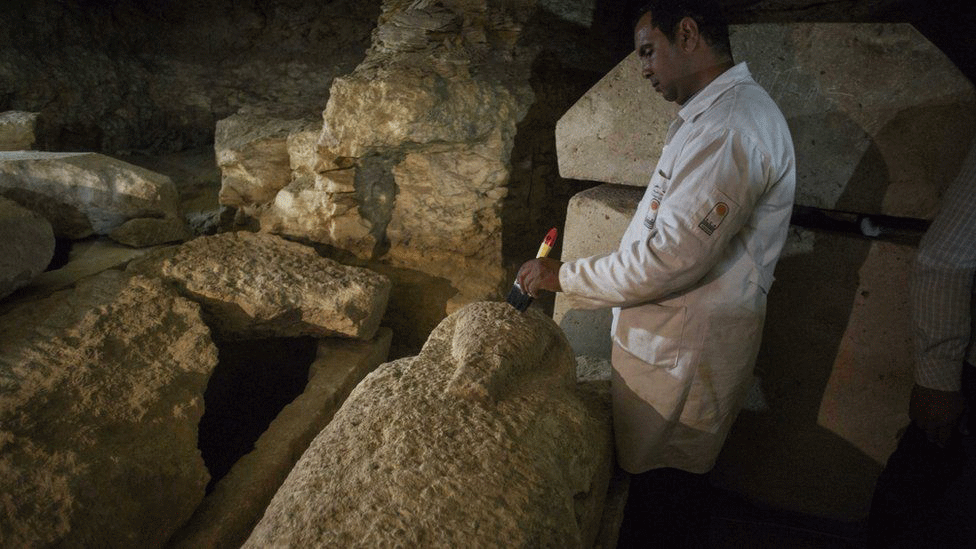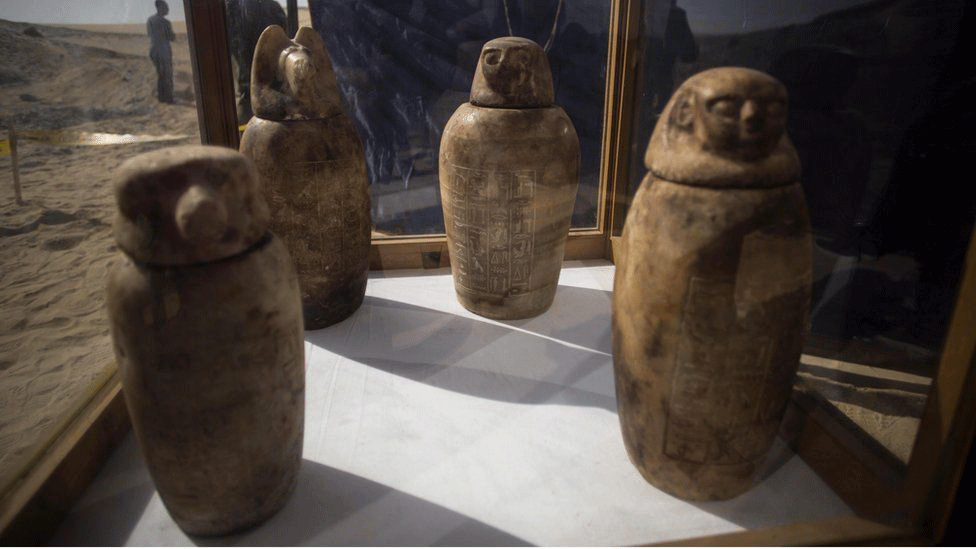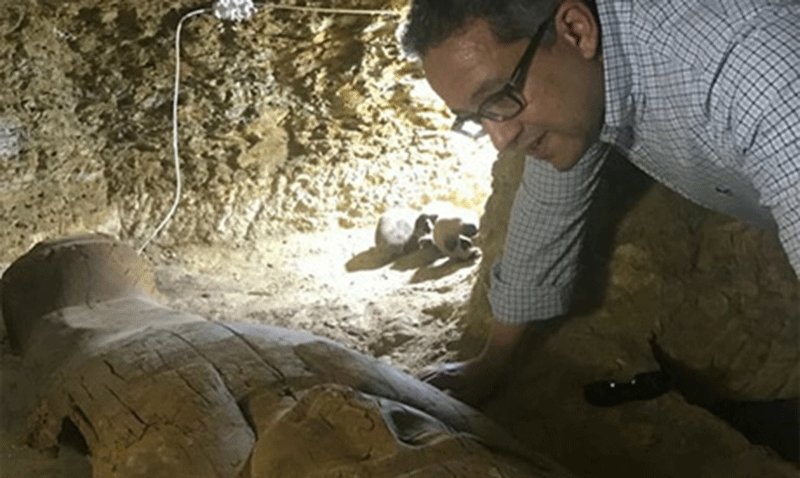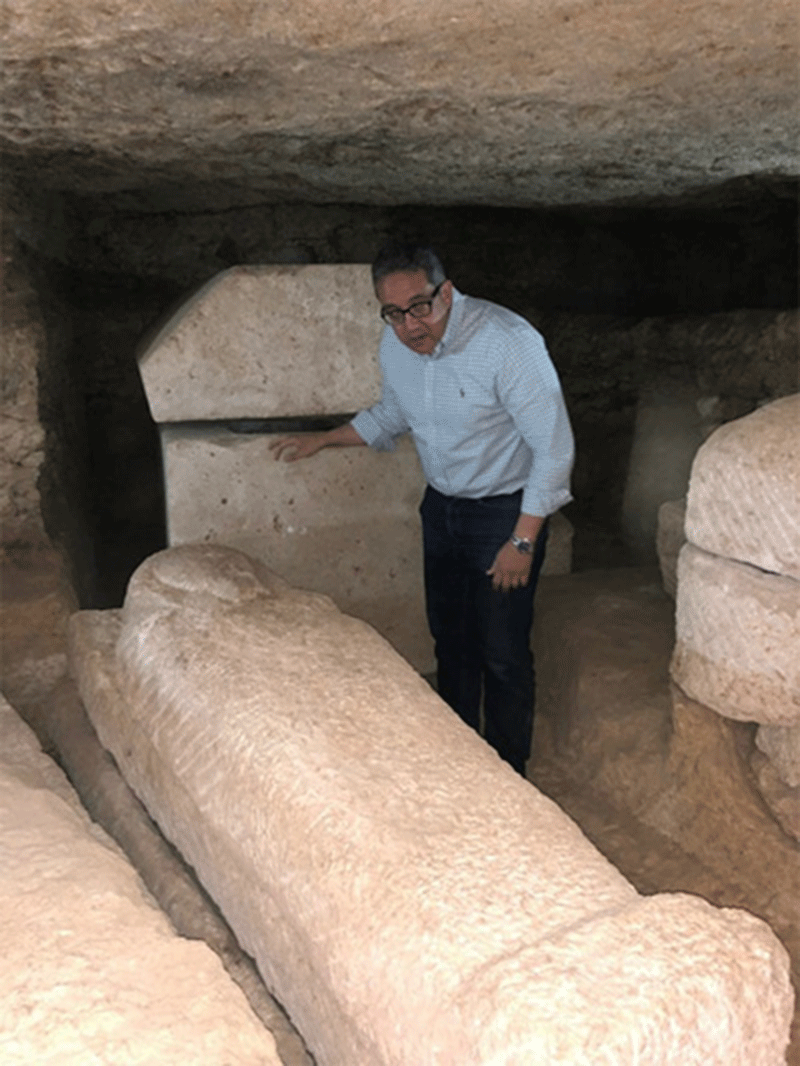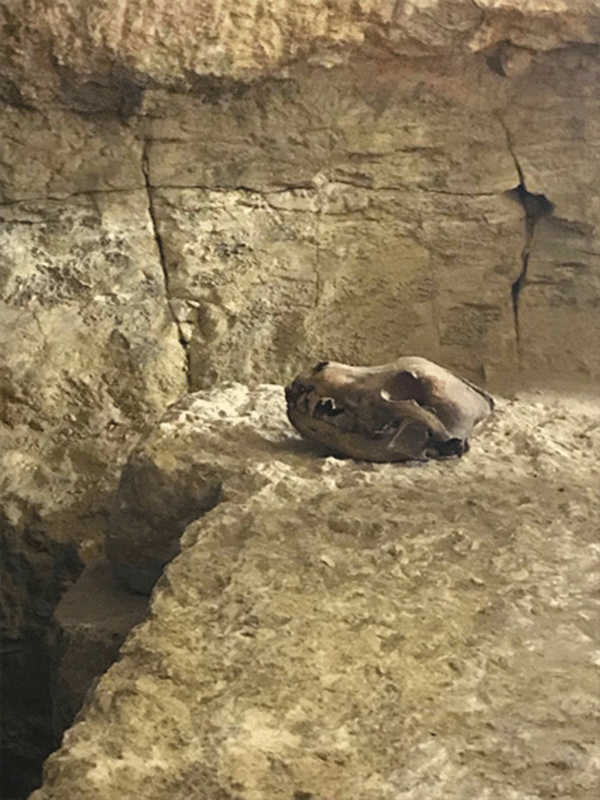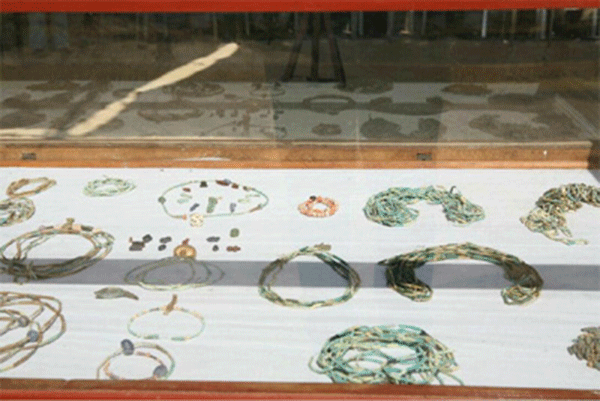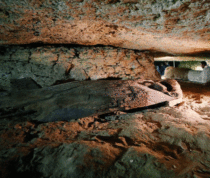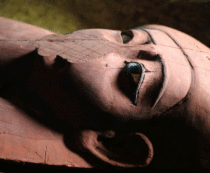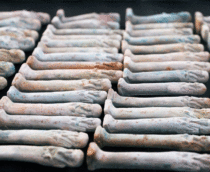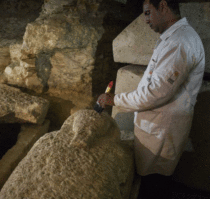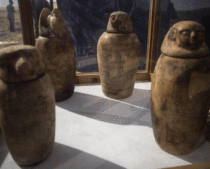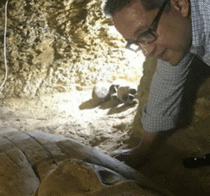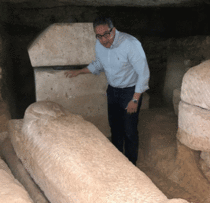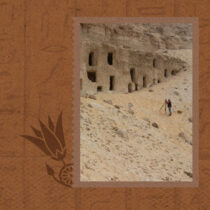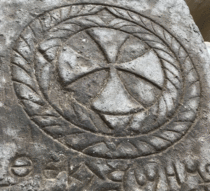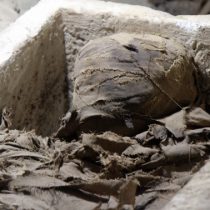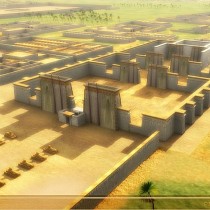Archaeologists in Egypt have discovered an ancient necropolis near the Tuna Al-Gabal archaeological site. The announcement and display of the first findings took place on Saturday with artefacts from the burial sites.
The Egyptian mission that made the discovery is led by Mostafa Waziri, secretary general of the Supreme Council of Antiquities. Apart from archaeologists from Egypt missions from Munich and Hildesheim, Germany, also took part in the excavations, which started at the end of 2017 and are expected to last five more years.
The newly discovered site is probably a 26th Dynasty cemetery with a large number of burial shafts. It is located 2.5 miles north of Tuna al-Gabal area, a large archaeological site on the edge of the western desert, with ancient catacombs from the Pharaonic Late Period and the Ptolemaic dynasty.
The tombs at the newly discovered site belong to priests of the ancient Egytpian god Thoth. Among the findings are a large number of ushabti figurines carved in faience. About 1,000 figurines are in a good state and many more were found broken. Also, other mobile findings include four canopic jars made of alabaster, with lids decorated with the faces of the four sons of the god Horus, also at a very good state and holding mummified inner organs. Texts on the jars show the name and title of the owners. Also, the mummy of high-priest “Djehuty-Irdy-Es” was found, decorated with a bronze collar depicting the god Nut and a collection of blue and red beads and bronze gilded sheets. Also, archaeologists found a gold mask.
Among the findings are also 40 limestone sarcophagi, some of them bearing the names and titles of their owners.
The discovery is very important, as Mr Waziri stated, since it offers information on several aspects of life in ancient Egypt.
So far archaeologists have unearthed eight tombs, but they expect to discover more in the following months.
